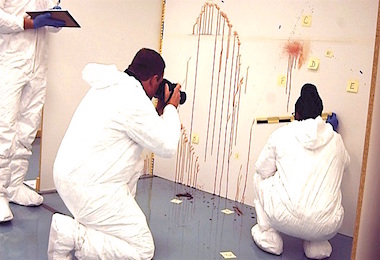About Blood Pattern Analysis (BPA)
The study of blood patterns may provide a strong indication of how they were created, helping to confirm the likely unfolding of events at a violent crime scene or within other circumstances.

A biological trace evidence analyst can also be referred to as a trace evidence examiner. A forensic scientist who performs trace evidence analyses as a result of physical contact between a crime suspect and victim to see if a person was present at a crime scene. Trace evidence materials commonly collected from crime scenes typically consist of:
If there is blood on clothing, weapons, surfaces or other items – or a suspicion that blood may be present – our blood pattern analysis (BPA) experts can examine, identify and interpret the available evidence to produce trustworthy conclusions.
If blood is identified, its pattern can suggest how it was transferred and what actions may have caused it, often resolving disputes about a person’s actions. For example, if someone claimed they were going to the aid of a victim, but there was suspicion of assault, blood pattern analysis (BPA) could assist in determining any involvement that person may have had.
Expert Blood Spatter, Blood Pattern Analysis (BPA)
Hau Forensics can also offer an informed expert opinion if the circumstances surrounding the mode of blood transfer are in dispute. Our experts are experienced in recovering samples from different backgrounds, maximising potential testing opportunities from the very slightest traces of evidential material. In addition, BPA can determine which area of staining is likely to provide the most informative result if sampled for DNA testing.
